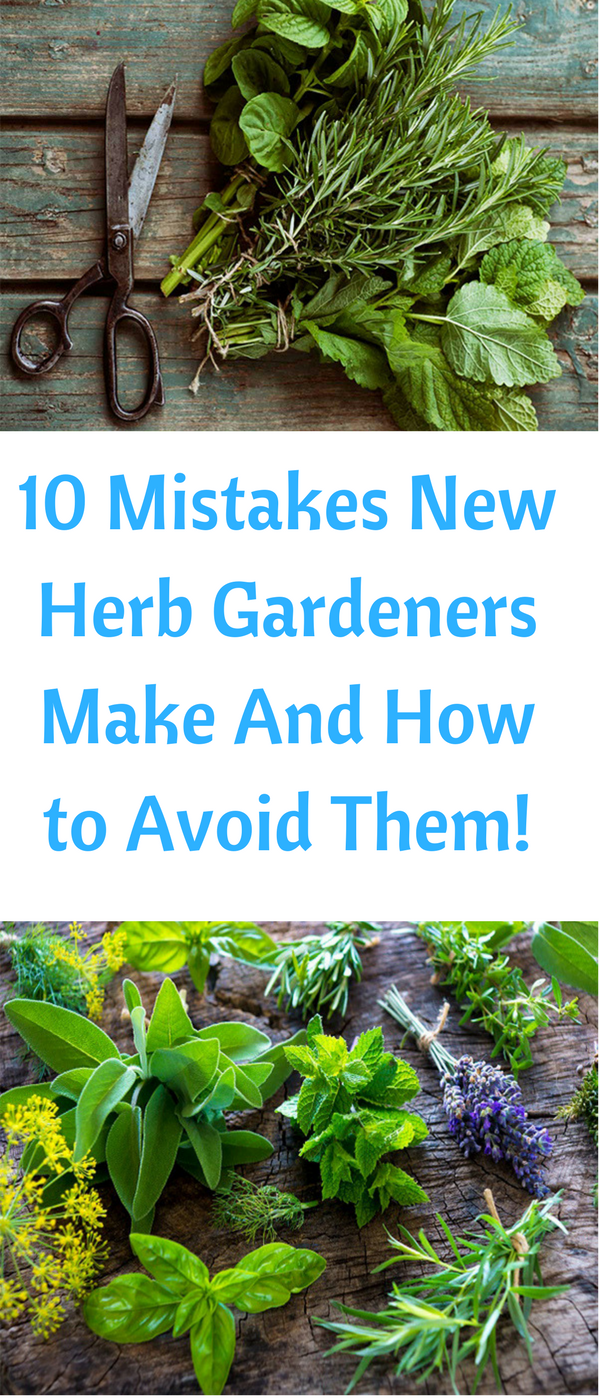10 Mistakes New Herb Gardeners Make And How to Avoid Them!
Fresh herbs are one of the greatest ways to increase the taste of your food healthfully. I often toss whatever leafy herbs are hand liberally into a salad to add unexpected variations in flavor (basil, oregano and dill are all great choices). Fresh herbs can add punch to sauces or create intensely flavorful crusts for roasted meats.
So you’re thinking of herb gardening, or maybe you tried it last year and it was an utter disaster? Have no fear. There are a few simple mistakes that many herb newbies make (and I know, because I made most of ’em myself). Master these simple and practical tips for herb gardening and you’ll be using your own fresh herbs like Mario Batali in no time.
Mistake 1: Growing from seed. When you first start out trying to grow fresh herbs, I recommend you begin by trying to grow from seedlings rather than planting your own seeds. These great little starter plants are widely available in grocery stores in the late spring. For the same price as a packet of fresh herbs from the produce section, you can buy your own little starter plant.
Mistake 2: Starting with the wrong varieties. I recommend you start by trying to grow fresh basil. It is the perfect trainer herb. First, basil grows quickly, allowing you to observe the effects of your care more easily. Second, basil leaves wilt visibly when not watered enough, but recovers well if you water the wilted plant. This makes basil a great ‘canary in the mineshaft’ to help you figure out how much water is enough.
Mistake 3: Watering herbs like houseplants. Instead, water herbs a moderate amount every day.
Mistake 4: Not cutting early and often. Again, basil is a great herb to practice pruning. As with all herbs, you want to cut the herb just above a set of growing leaves. With basil, when you cut the plant that way, the originally trimmed stem will no longer grow. However, two new stems will grow around the original cutting, creating a “V” shape. If you don’t trim basil aggressively, it will continue to grow straight up, and become too tall and top-heavy. Making your first trim approximately 3-4” above the soil produces a nice sturdy plant.
Mistake 5: Taking the leaves from the wrong place. When you are just starting out it seems to make so much sense to pick off a few big leaves around the bottom of the plant. Wrong. Leave those large leaves. They are the solar panels that power your herb’s growth.
Mistake 6: Letting your plants get too randy. If you are pruning regularly, this may never become an issue, but unless you are growing something for its edible flowers, be sure to cut back herbs before they start growing flowers. If you want leaves, keep cutting off the little flower buds whenever you find them (see photo above), and it will encourage your plant to focus on growing more leaves.
Mistake 7: Using tired soil with no nutrients. Tired soil that has been sitting in your garden or lawn for ages often looks grey and a little depressing. Would you want to grow in that stuff? Give your plants a dose of the good stuff andthey’ll thank you for it. I grow my herbs in a combination of potting soil, used coffee grounds (with a near-neutral PH, available for free at Starbucks), and organic compost. If I have some on hand, I also throw in crushed egg shells.
Mistake 8: Getting in a rut. Once you have become comfortable with basil, I recommend moving on to try growing oregano, mint, rosemary and thyme. All are regularly useful herbs in the kitchen, and all are relatively easy to grow.
Mistake 9: Know the types. When choosing herbs, read the label carefully. For example, there are two main varieties of oregano: Mediterranean and Mexican.
Mistake 10: Watch where you plant what. If you are planting in soil instead of pots, take care that your cute little herb seedling doesn’t become a giant plant that takes over your garden.

